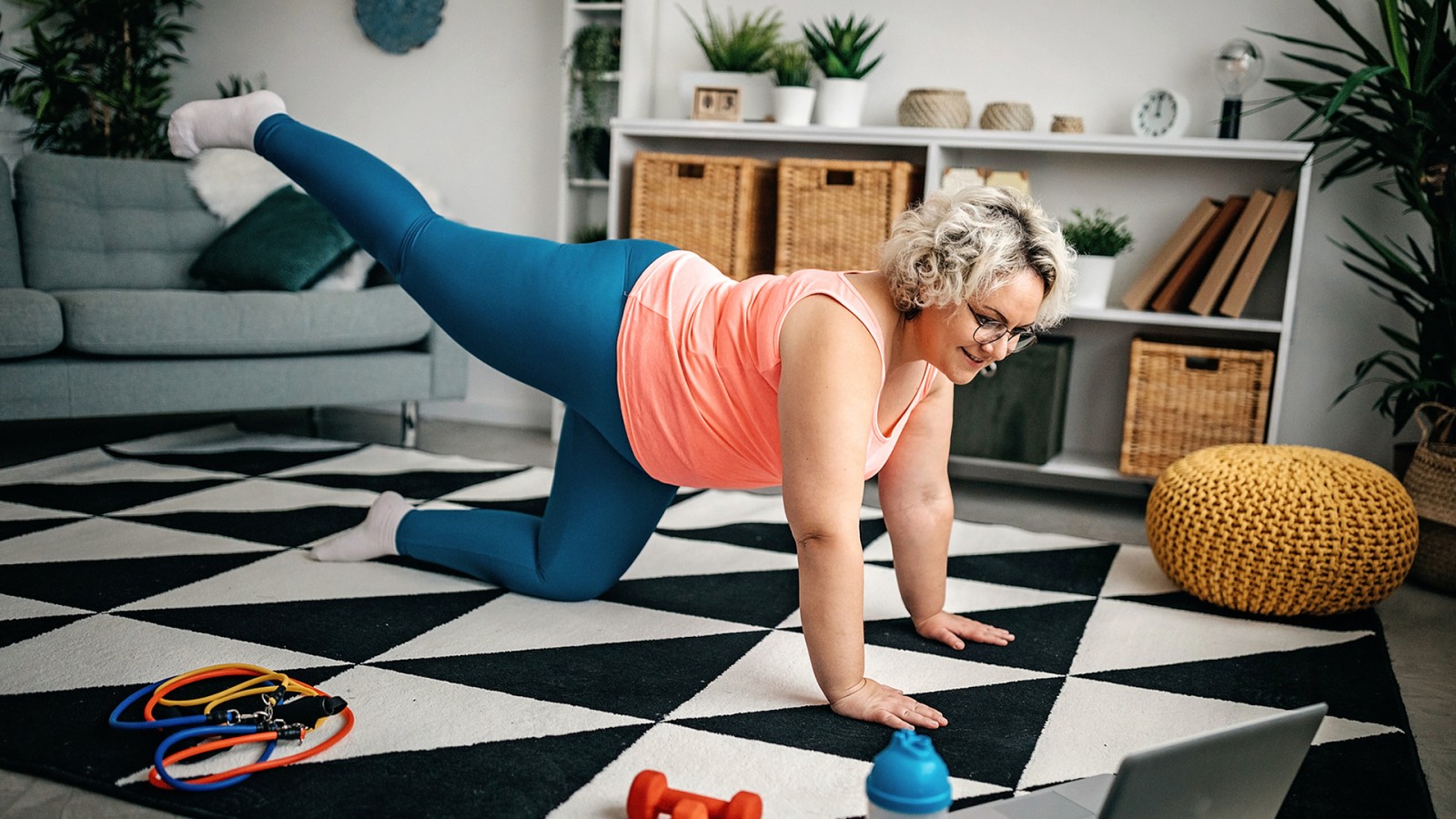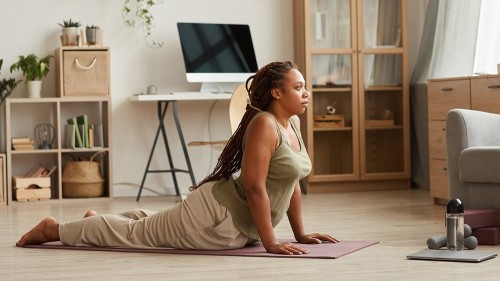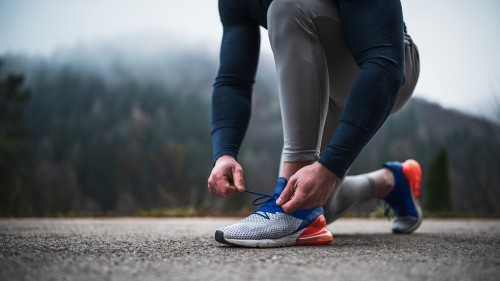Benefits of Regular Exercise and How to Start Exercising Safely
Last Updated on June 17, 2021
Medically Reviewed by Anthony Dugarte, MD
Regular exercise has many benefits, but it can be challenging to get moving. We share some of our best evidence-based tips to get you motivated.


At some point in your life, you may have heard that you should exercise and be physically active to be healthy, but has anyone ever told you why?
When most people think about the benefits of regular exercise, they may only think about gaining muscle and obtaining a certain physique.
However, that’s not the only thing that exercise can do for you. Exercise affects every part of your body and is an essential component to reaching your optimal level of health.
If you’re looking for some motivation to start an exercise routine, here are the top benefits that you can achieve once you start.
1. Great for Heart Health
Exercise helps your heart work more efficiently to pump blood throughout your body, reducing the risk for various cardiovascular diseases. (1)
If you are at risk for elevated cholesterol or triglycerides, physical activity, combined with dietary changes, can also help your blood lipids return to normal levels.
2. Helps You Sleep Better
If you’ve ever had a long day where you’ve had to walk great distances, carry around heavy objects, or engage in a sport, you know how great it feels to get in bed at the end of the day and go to sleep.
This is because exercise is known to improve your sleep quality. It can reduce the amount of time it takes to fall asleep, reduce sleep apnea, increase deep sleep, and improve self-reported sleep quality. (2)
Besides the feelings of exhaustion contributing to sleep, exercise may increase serotonin activity in the brain (leading to melatonin production, a sleep hormone). (3)
3. Keeps Your Bones Strong
As we get older, the body’s ability to rebuild bone decreases and can lead to a decrease in bone density and strength.
If left unmanaged, it can lead to osteoporosis, a condition in which bones become weak and are more prone to painful fractures that limit mobility.
Regular aerobic and resistance exercises increase bone formation by regulating hormonal processes and putting mild stress on the bone that stimulates the cells that build bone tissue. (4)
4. Improves Brain Function
Physical activity may be an important factor in maintaining neuroplasticity, which is the brain’s ability to form new connections and learn new things throughout life.
Exercise can increase blood flow to the hippocampus, the part of the brain that has a major role in learning and memory. (5)
Studies find that regular exercise can improve cognitive function in older adults, may assist with symptoms of ADHD in children and adults, and generally improve memory in healthy adults and children. (6, 7, 8)
5. Maintains Muscle Strength and Balance
Muscle strength is necessary for being able to do activities of daily living and maintain physical function. (9)
Lack of exercise may decrease muscle mass and strength and make daily activities like walking, climbing steps, or carrying objects difficult.
Maintaining aerobic and resistance exercise routines has been shown to increase muscle, decrease muscle fatigue, and improve quality of life. (10)
Regular exercise can also help maintain balance and reduce falls. In older age, falls can increase the risk of hip fractures and head injuries, which can lead to higher mortality rates. (11, 12)
6. Helps Maintain Healthy Body Composition
Regular exercise reduces visceral body fat, the fat found in the stomach area, and waist size, two measurements associated with increased risk for chronic illnesses. (13)
Exercise also helps either maintain or build lean muscle tissue, which can increase metabolism. An increased lean muscle may help regulate appetite and support weight management. (14)
7. Acts as a Mood Booster
As Elle Woods from Legally Blonde once said, “Exercise gives you endorphins. Endorphins make you happy.”
Exercise is known to increase the circulation of neurotransmitters (dopamine, noradrenaline, and serotonin) and endorphins that can improve your mood. (15)
Studies find that regular exercise can improve symptoms of depression and anxiety.
8. Improves Immune Function
Research finds that short periods of moderate or vigorous-intensity exercise (less than 60 minutes) can improve immune function in several ways. (16)
Exercise increases the circulation of anti-inflammatory proteins, white blood cells, and antibodies that can help protect the body.
Long periods of intense exercise (greater than 2 hours) may increase the risk of respiratory illness due to stress on the body, but this risk can be decreased with proper nutrition and other health habits.
9. Reduces Risk for Chronic Illness
“Food as medicine” is a common phrase heard in the healthcare field, but “exercise is medicine” is another natural treatment option.
The American College of Sports Medicine and American Medical Association endorse exercise as a part of disease treatment and prevention. (17)
Research supports prescribing exercise as medicine for 26 different chronic diseases ranging from psychiatric diseases, neurological diseases, cardiovascular diseases, pulmonary diseases, metabolic diseases, skeletal disorders, and cancer. (1)
10. Increases Your Lifespan
I saved the best benefit for last – exercise can help you stay alive longer!
Maintaining some degree of regular physical activity maintains autophagy in the body. What’s that?
Well, autophagy is a process in which your body clears out old and damaged cells and proteins, allowing for new and healthy cells to be generated.
This ability tends to decrease with older age and is directly related to the body’s aging.
Regular exercise can help regulate autophagy in the body and help your body stay physiologically young for longer. (18)
How to Start Exercising Safely
Now that you know some of the major benefits of exercise, here’s how you can safely get into an exercise routine that suits your needs:
Find an Activity You Like
Many people do not start exercising because they don’t like the types of exercises they’ve been exposed to before.
Before you start an exercise routine, look at your options – do you like running, skating, weights, dancing, or Zumba? There are many ways to be active.
Start Slowly
If you have been previously inactive or are used to only light exercise, immediately jumping into an intense workout may cause excessive stress on the heart.
Try working out for 10–15 minutes (or as tolerated) and slowly increasing your workout’s length and intensity as you can.
I recommend speaking with your doctor before making any drastic changes to your level of physical activity to prevent injury or any other health complications.
Switch It Up!
Did you know that there are four major types of exercise that you should get throughout the week?
To get the most benefits from exercise and reduce injury, cycle between these types of exercise:
- Endurance
- Strength
- Balance
- Flexibility
Find an Accountability Partner
If starting exercise by yourself is intimidating or doesn’t feel fun, adding a social component to your workouts may help.
Try asking a friend to join you on your workouts, joining a group class, logging your workouts on an app, or getting a trainer.
How Much Exercise Do You Need?
The U.S. Department of Health and Human Service’s Physical Activity Guidelines for Americans has recommendations for individuals at all ages and stages of life. (19)
Once you get comfortable doing exercise again, try to aim for 150–300 minutes of moderate-intensity exercise weekly (including bicycling, aerobic exercises, and outdoor chores).
Or 75–150 minutes of vigorous-intensity exercise per week (including uphill hiking, running, intense team sports games).
No matter what intensity of exercise you choose, be sure to include muscle-strengthening exercises at least twice per week.
If you cannot meet the minimum 150 minutes of moderate-intensity exercise per week, remember that doing any level of physical activity that your abilities allow is better than nothing.
The Bottom Line
Exercise is something that everyone can benefit from. It can help your body stay young throughout the years, prevent and help treat chronic illnesses, and helps you feel better.
Of course, exercise alone cannot be the only focus for your personal wellness journey.
Regular exercise combined with healthy habits, including a varied diet focused on whole foods, stress reduction, sleep hygiene, and avoidance of tobacco and excessive alcohol, creates a healthy lifestyle.
At WellnessVerge, we only use reputable sources, including peer-reviewed medical journals and well-respected academic institutions.
- Exercise as medicine – evidence for prescribing exercise as therapy in 26 different chronic diseases:
https://onlinelibrary.wiley.com/doi/full/10.1111/sms.12581 - Exercise and sleep: a systematic review of previous meta-analyses:
https://www.ncbi.nlm.nih.gov/pmc/articles/PMC5527334/ - Exercise and sleep in aging: emphasis on serotonin:
https://pubmed.ncbi.nlm.nih.gov/25104243/ - The roles of exercise in bone remodeling and in prevention and treatment of osteoporosis:
https://pubmed.ncbi.nlm.nih.gov/26657214/ - Physical exercise, neuroplasticity, spatial learning and memory:
https://link.springer.com/article/10.1007/s00018-015-2102-0 - Impact of exercise training on physical and cognitive function among older adults: a systematic review and meta-analysis:
https://pubmed.ncbi.nlm.nih.gov/31051329/ - Sweat it out? The effects of physical exercise on cognition and behavior in children and adults with ADHD: a systematic literature review:
https://pubmed.ncbi.nlm.nih.gov/27400928/ - Physical exercise, neuroplasticity, spatial learning and memory:
https://pubmed.ncbi.nlm.nih.gov/26646070/ - Physical activity and physical function: moving and aging:
https://www.ncbi.nlm.nih.gov/pmc/articles/PMC6226270/ - A randomized controlled trial on the effects of combined aerobic-resistance exercise on muscle strength and fatigue, glycemic control and health-related quality of life of type 2 diabetes patients:
https://pubmed.ncbi.nlm.nih.gov/27285345/ - Physical activity programs for balance and fall prevention in elderly: A systematic review:
https://pubmed.ncbi.nlm.nih.gov/31277132/ - Risk Factors Contributing to Higher Mortality Rates in Elderly Patients with Acute Traumatic Subdural Hematoma Sustained in a Fall: A Cross-Sectional Analysis Using Registered Trauma Data:
https://www.ncbi.nlm.nih.gov/pmc/articles/PMC6265997/ - Exercise as medicine - evidence for prescribing exercise as therapy in 26 different chronic diseases:
https://pubmed.ncbi.nlm.nih.gov/26606383/ - Role of resting metabolic rate and energy expenditure in hunger and appetite control: a new formulation:
https://dmm.biologists.org/content/5/5/608 - Exercise Benefits Brain Function: The Monoamine Connection:
https://www.ncbi.nlm.nih.gov/pmc/articles/PMC4061837/ - The compelling link between physical activity and the body's defense system:
https://www.sciencedirect.com/science/article/pii/S2095254618301005 - Exercise is medicine and physicians need to prescribe it!:
https://bjsm.bmj.com/content/43/1/3 - Autophagy and aging: Maintaining the proteome through exercise and caloric restriction:
https://pubmed.ncbi.nlm.nih.gov/30430746/ - Physical Activity Guidelines for Americans:
https://health.gov/our-work/physical-activity/current-guidelines






